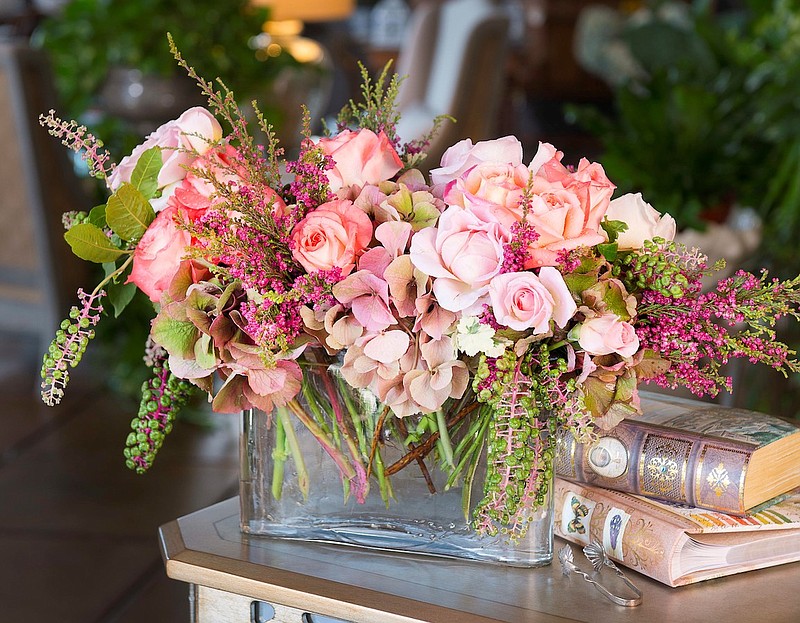I love getting flowers. I love sending flowers. They are beautiful. They convey emotion. And, perhaps best, when they die they get tossed, so they don't add to anyone's clutter.
However, that perfect gift of expression can wilt faster than a rose out of water when the flower company blows the order. And you don't get a second chance at one-time occasions.
Last week I shared two recent bad experiences I had with flower shops: One where I didn't get what I ordered and a second where I got less than I expected.
If this is a pain point for me, I figure, it must be for you, too. So I grilled three industry experts to find out what consumers like me are doing wrong, and what we can do to increase our chances of getting the flowers we want delivered right.
For their part, florists have had a tough year, said Juan Palacio, founder of BloomsyBox, a Miami-based online subscription flower service that ships more than 100,000 boxes of fresh-cut flowers a month. Bad weather in South America, where most of our nation's flowers come from, and covid combined to cause a serious flower shortage.
Florists have felt the "pandemic pinch" said Sally Kobylinski, owner of In Bloom Florist, a large Orlando, Fla.-based flower shop. "We have felt the impact in our supply chain, where we've had a shortage of flowers, plants and hard goods (pots and vases), as well as of labor."
While you might think florists would be overachieving to build their business back, in fact, some are back to their same old customer-repelling habits.
"Take what happened to you," Palacio said about the misrepresented arrangement I had sent to a funeral. "The florist didn't want to say no to the order. The shop had flowers they felt they could substitute. They saw that you lived far away and wouldn't likely be a repeat customer, and they didn't care. It's sad, but it happens."
But maybe not for long.
"The floral industry is going through a major shift," said Farbod Shoraka, founding owner of BloomNation.
This week my experts helped me come up with the following consumer tips to help us get what we want more often:
◼️ Order directly from a store. Don't go through a wire service. When you order through a service, like Teleflora, FTD, or 1-800-Flowers, you work with a broker who takes a cut (often 30% or more) and you choose from stylized, photo-shopped images that flower shops try to mimic with what they have in their cooler. "They often don't have the flowers or the design ability," Shoraka said. Flower shops are forced to either lose money or cut corners. "It's very rare to order through a broker and be surprised in a good way."
◼️ Ask what's in the cooler. Asking a florist to mimic a picture from a floral catalog is not the best practice, Palacio said. Instead, call the florist, ask what is fresh in the cooler, and discuss what they can make from that.
◼️ Discuss substitutions. "Flower substitution is by far the biggest frustration," Shoraka said. Brokers for wire service companies don't know what flower shops have in inventory, but take orders anyway. When you work directly with the store, and you like an arrangement featured on its site, ask, "If I ordered this, would you have to substitute any flowers?"
◼️ Order well in advance. If you want an arrangement with a specific type of flower, order well before the delivery date, Kobylinski added. "Tell the florist that flower is meaningful to you, and to tell you if it isn't available."
◼️ Be frank about budget. Ask the florist exactly what you will get for what you're spending. If it seems too skimpy, adjust either the budget or the expectation.
◼️ Work only with actual stores. Many florists today are working out of their homes and don't even have proper coolers, Kobylinski said. Search the shop name, and make sure it's a real florist shop, not just an email address.
◼️ Buy from your grocer. If you don't have to send flowers, buy them from the grocery store. Costco, Sam's Club and Trader Joe's get flowers that are as good or better than your local florist for about one-third the price.
◼️ Pay with a credit card. Don't pay with cash, check or debit card, Kobylinski said. The best hammer you have is your credit card company. If you charge the order, and something goes wrong, they hold the purse strings and can protect you.
◼️ Read and leave reviews. Before choosing a florist, look at the store's online reviews. If you had a bad or good experience, write a review.
◼️ Build in-store rapport. If you can, walk into a store and talk directly to the florist, become more than a name and phone number. "If you have a good rapport with a florist, you're golden," Shoraka said.
Join me next week to discover the dirty little flower-industry secrets every consumer should know.
Marni Jameson is the author of six home and lifestyle books, including "Downsizing the Blended Home — When Two Households Become One."
